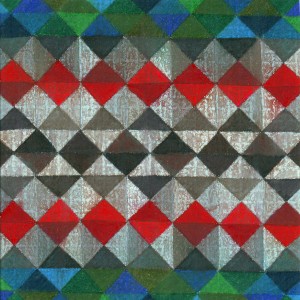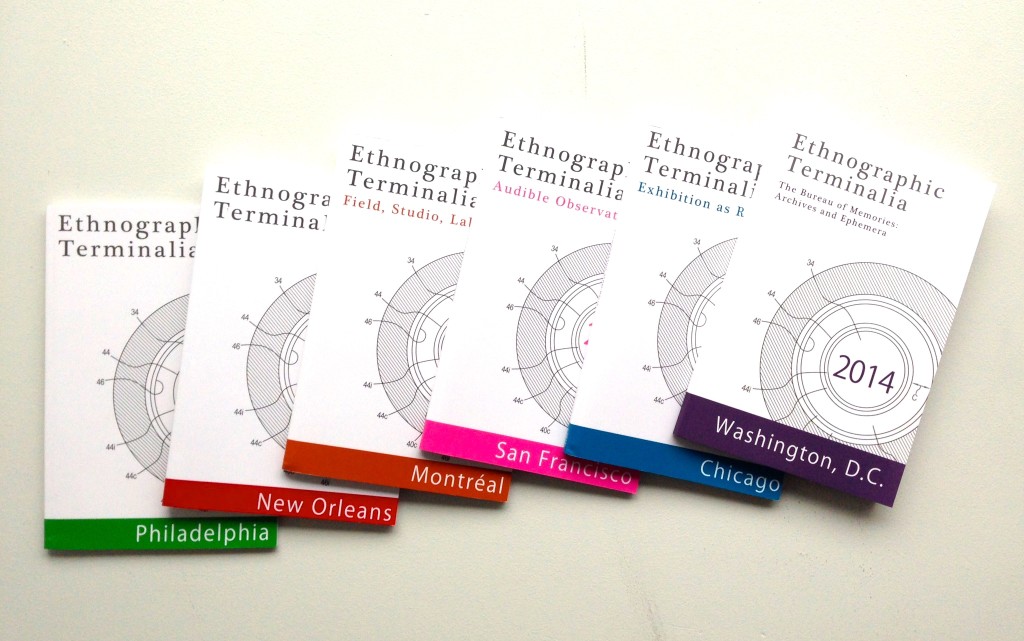(Art)ifact

Anthony Callaway
These items are elements of a larger exploration into my own cultural heritage as an enrolled member of the Karuk Tribe. Last fall, through the generosity of an Indigenous Contemporary Arts Program at the National Museum of the American Indian (NMAI), I was able to travel to Washington, D.C. and conduct research in the NMAI and the National Museum of Natural History collections as well as the National Anthropological Archives. Working directly with Karuk objects and information sparked a desire to further explore the various design patterns that embellished baskets and other objects such as bone purses and dance regalia. My goal is not to blindly copy what I see, but to explore and reinterpret these designs as a contemporary artist of Karuk and Euro-American ancestry.
This project started out with studies conducted in monotype prints that looked at the geometry of designs based off of triangular patterns. At my BFA exhibition, scale became an important factor and one of the prints was digitally scanned and printed at a large enough size that people would be able to walk through it. More recently, this project has seen me making small pencil drawings that incorporate a much broader color palette. The two of these drawings on display are intended to blur what I see as an artificial boundary between traditional and contemporary Native art. My future plans for this project include continuing to investigate scale through installation pieces and bringing in photography and sculpture as alternate mediums for exploration.
Biography
An enrolled member of the Karuk Tribe of California, Anthony was born and raised in the Seattle area and earned a Design BFA from Cornish College of the Arts. He has also studied at Pilchuck Glass School, the Institute of American Indian Arts, and Crow’s Shadow Institute. He was selected in 2009 as the first Emerging College Artist by the Smithsonian’s National Museum of the American Indian and has received grants and awards from a variety of organizations including Worldstudio/American Institute of Graphic Arts, Potlatch Fund, and the National Native Development Program at the Longhouse at Evergreen State College.

